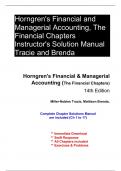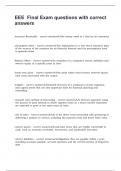Exam (elaborations)
Solutions for Horngren's Accounting, The Financial Chapters, 14th Edition Miller-Nobles (All Chapters included)
- Course
- Institution
Complete Solutions Manual for Horngren's Accounting, The Financial Chapters, 14th Edition by Tracie L. Miller-Nobles, Brenda L. Mattison ; ISBN13: 9780137961214. (Full Chapters included Chapter 1 to 17)....1.Accounting and the Business Environment 2.Recording Business Transactions 3.The Adjusting...
[Show more]




